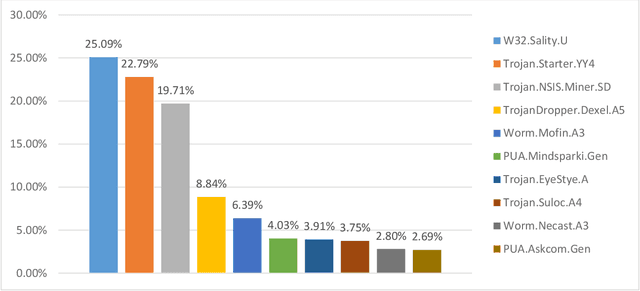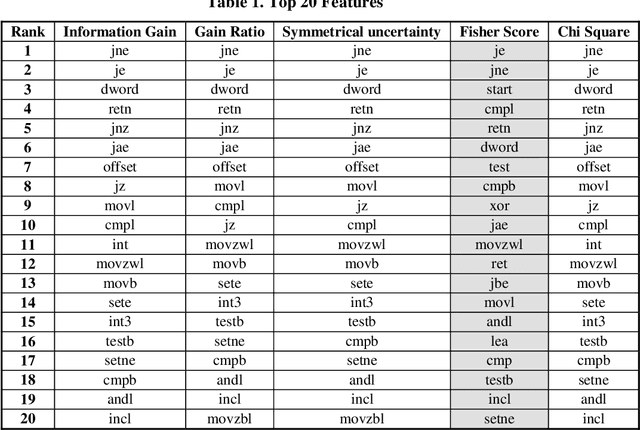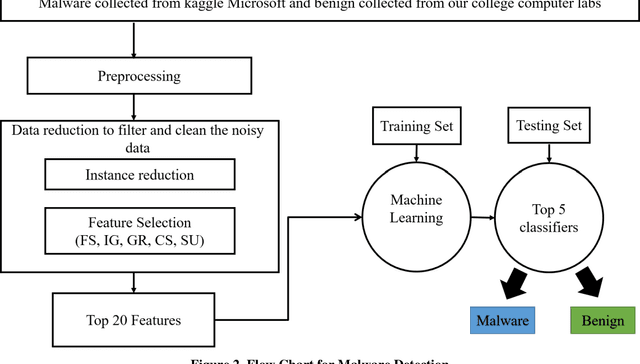Detection of Advanced Malware by Machine Learning Techniques
Paper and Code
Mar 07, 2019



In today's digital world most of the anti-malware tools are signature based which is ineffective to detect advanced unknown malware viz. metamorphic malware. In this paper, we study the frequency of opcode occurrence to detect unknown malware by using machine learning technique. For the purpose, we have used kaggle Microsoft malware classification challenge dataset. The top 20 features obtained from fisher score, information gain, gain ratio, chi-square and symmetric uncertainty feature selection methods are compared. We also studied multiple classifier available in WEKA GUI based machine learning tool and found that five of them (Random Forest, LMT, NBT, J48 Graft and REPTree) detect malware with almost 100% accuracy.
* Springer, Advances in Intelligent Systems and Computing, Vol. 742,
pp. 332-342, 2018 * Conference Paper, 7 Pages
 Add to Chrome
Add to Chrome Add to Firefox
Add to Firefox Add to Edge
Add to Edge